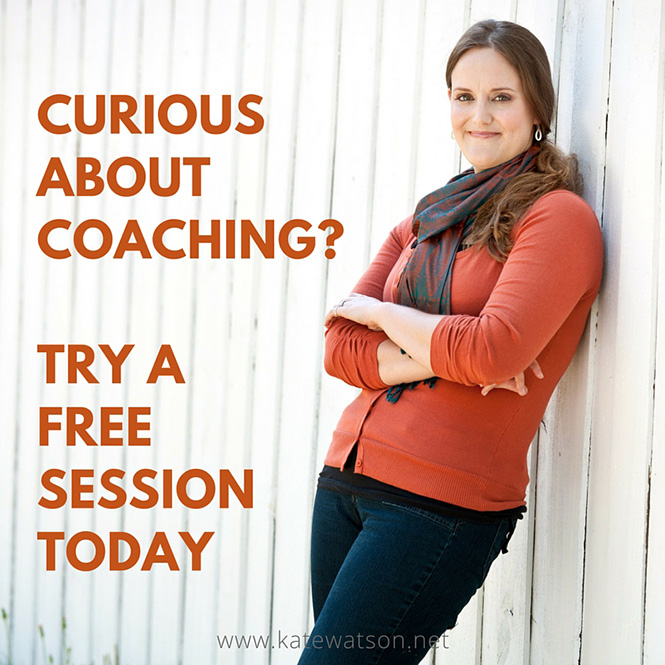
You’ve got big dreams, but maybe you need some help reaching them. Coaching could be just what you’ve been looking for. And now is a great time to try it—because I am offering individual sessions at a fabulous rate (free!).
In January, I joined the Courageous Living Coach Certification program and, as part of my practicum, I’ve been accruing one-on-one hours working with clients. Now I’m ready to work with you.
People come to coaching for a variety of reasons. Some want to achieve big dreams, others need help overcoming obstacles, and still others want to talk through challenging situations.
Generally speaking, coaching clients are seeking more fulfillment or balance in their lives, and they want accountability and support to help them get there. That’s where a coach comes in.
If you’ve been considering coaching, I would love to work with you.
For the next three months or until my client roster fills up, whichever happens faster, I’ll be offering a free consultation and coaching session for new clients. This is a great opportunity to experience coaching and see if we’re a good fit. But there are only 5 spots available, so…

Want to know more about what coaching is and isn’t?
The International Coach Federation defines coaching as “partnering with clients in a thought-provoking and creative process that inspires them to maximize their personal and professional potential.”
The coaching relationship is a co-created one in which client and coach are equals. The coach provides tools to help the client:
- get clear on what s/he seeks to achieve and then align sessions toward that goal,
- engage in self-discovery,
- uncover strategies and solutions that will work best for his/her life, and
- remain accountable throughout the process.
Coaches come from the perspective that the client is the expert in her or his own life, and honors each client’s creativity, resourcefulness, and wholeness of being. The client’s role is to take responsibility for his or her life decisions and to engage fully in the process.
Coaching isn’t advice giving, counseling, mentoring, or training. Instead, it’s an intentional conversation to elicit a client’s own wisdom and solutions for optimal growth.
Taking that first step to enter into a coaching relationship can be vulnerable but, when you have trust for your coach and a willingness to show up, it can help you unlock your potential and improve your life and work in ways you never imagined.
Curious about how this coaching thing would work?
To get started, simply book your free session. We’ll then meet via my teleconferencing service to discuss what brings you to coaching and how we can best work together.
If we decide we’re a good fit, I’ll send you a client agreement and questionnaire to help guide our ongoing sessions, and you’ll select a coaching rate you can afford from my sliding scale.
Although I’m not requiring a long-term commitment during my coaching practicum, most clients choose to work with a coach for at least three months (or six sessions) to provide time and space for significant progress to be made.
Have a few more questions? Feel free to drop me a line—or set up your free session. I look forward to working with you!
Cheers,

P.S. If you subscribed to my newsletter, you would have learned about this all the way back in February. To avoid missing out on other special offers ahead of the pack, subscribe today!
Last year for my birthday, my mother-in-law gave me a coloring book and some markers. Little did she know, it was a perfect gift! In fact, I was already hooked by the adult coloring craze, and had downloaded some blank mandalas online and purchased a set of fancy colored pencils from Amazon.
What I’ve discovered is that coloring is a lovely, ease-filled de-stressor.
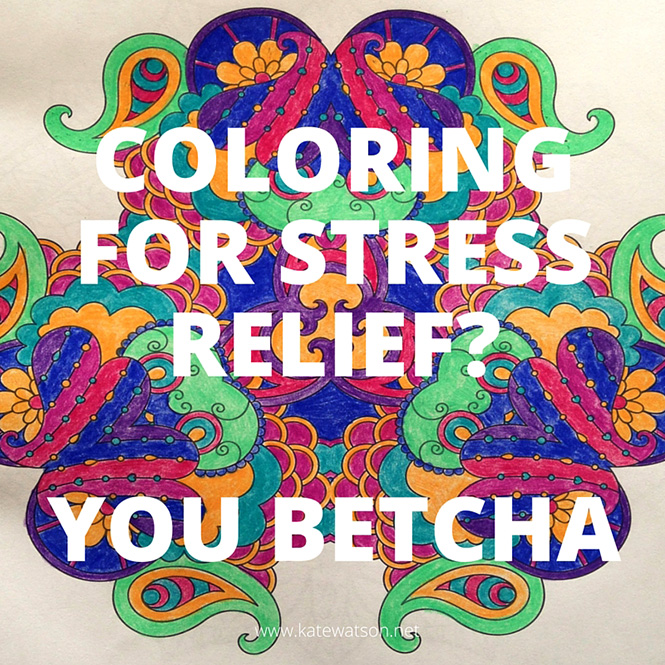
Here’s an example: I was feeling creatively uninspired the other day. I had not practiced adequate self-care due to my busy schedule and, frankly, I was feeling grumpy and, dare I say, petulant. I knew I had to do something to improve my mood, but nothing inspired me.
I considered painting, but setting up my watercolors seemed hard.
I looked toward my journal, but my standard stream-of-consciousness journaling practice didn’t rev my engine.
I then glanced at my bookshelf and saw a coloring book and pencils. That seemed possible, even easy. And it was. All I had to do was select a few colors and start filling in empty spaces.
Coloring has become a new form of meditation and mindfulness training for me. Lately, I haven’t been able to sit for 10-15 minutes in traditional meditation; the most I can manage is about 3 minutes and sometimes even that seems impossible.
When I turn to my coloring books, I am able to concentrate on a simple, enjoyable task for 15-30 minutes, calm my monkey mind, and refresh my creativity and spirit.
There is a reason this works. As clinical psychologist Ben Michaelis explains, “There is a long history of people coloring for mental health reasons. Carl Jung used to try to get his patients to color in mandalas at the turn of the last century, as a way of getting people to focus and to allow the subconscious to let go. Now we know it has a lot of other stress-busting qualities as well.”
I’ve written about the benefits of having a creative outlet before, which include increased mindfulness, reduced stress, improved mood, and decreased risk of age-related decline. All that, from something so simple? Believe it.
What if you’re too busy to color? Well, studies have also shown that stepping away from a thorny problem and occupying your conscious mind with another activity increases the likelihood your unconscious mind will find a novel solution.
As psychologist Richard Wiseman writes in 59 Seconds: Change Your Life in Under a Minute, “Genuine creativity can come from spending just a few moments occupying your conscious mind, thus preventing it from interfering with the important and innovative activity in your unconscious.”
So, while coloring may at first appear unproductive, it can actually be quite helpful in boosting your ability to solve problems along with a whole host of other health benefits.
If you’re new to this and feeling a bit silly, Dr. Michaelis writes, “Try thinking of coloring like you might think about eating your vegetables: just one is not going to kill you, and who knows, you might actually like it!”
I also know that sometimes the burden of choice can be an impediment to starting so, to avoid any analysis paralysis, here are the colored pencils and books I use, along with some free coloring resources:
And if you’re feeling a bit uncertain about adopting what was a child’s pastime now that you’re an adult, don’t take my word for it. Check out:
Like this post? Share it with a friend or leave a comment. And happy coloring!
Cheers,

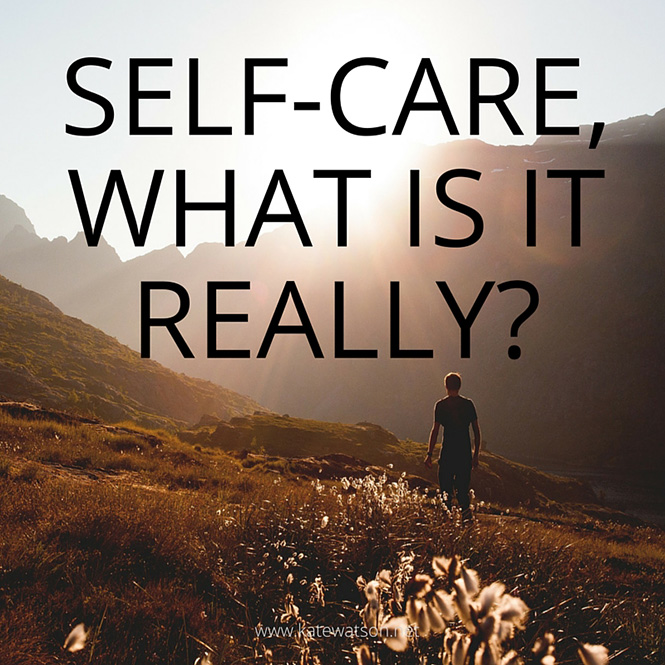
During a coaching session a few months back, a client told me she didn’t know what self-care meant. I blinked a couple of times—she couldn’t see me because we were coaching over the phone—and then asked something along the lines of, “What do you think it is?”
She reiterated that she didn’t really know and that she was uncomfortable with the idea of being unproductive, having grown up with role models who demonstrated the value of hard work and staying busy.
As a self-care proponent, I thought her take was interesting. While practicing self-care might not appear productive in the sense that “I have to finish this report because I promised it to my boss,” I believe it’s very productive when you think of it in terms of providing for your well-being so you can bring the best of yourself to the world.
It’s kind of like the well-known airline edict to put on your own oxygen mask before assisting others.
This coaching session got me thinking, however: If my client was struggling to understand the concept of self-care, surely others must be as well.
So I ask you, dear reader: Do you understand the value of self-care, or do you feel like you’re missing something? Do you prioritize your self-care, or do you treat it like one more to-do item you can’t find time for? I’m genuinely curious, so please feel free to share your thoughts at the bottom of this post.
In the meantime, I’ll continue my story. During our session, I asked my client to tell me about a time she felt healthy, nourished, and at peace. She recalled participating in a 5K with her friends and spouse.
I then asked what, in particular, felt nourishing about that experience, and she told me it was having something to look forward to, spending time with loved ones, and getting good exercise. From there, we were able to brainstorm a list of 15 things that could serve as self-care for her—because, you see, it’s unique to each person.
As self-care mentor Christy Tending writes, “I hear the myth repeated often that self-care is all about bubble baths (or similar indulgence).” That makes it sound silly and unnecessary, doesn’t it? But really, caring for yourself is one of your primary responsibilities in this life. If you don’t take the initiative, after all, who will?
And while my brand of self-care includes reading, quality time with my husband, long walks in nature, and yes, soaking in hot water, I know that may not be your definition, as it wasn’t for my client.
So, if self-care isn’t all bubble baths and self-indulgence, what is it really? One of my favorite definitions comes from a publication of the University of Kentucky, which says, “Self-care includes any intentional actions you take to care for your physical, mental, and emotional health.”
In determining what self-care means to you, consider this: When do you feel nourished? Is it when you visit friends, practice yoga, run a mile, or something else entirely? Whatever that is, that’s your version.
Practicing self-care pertains to every aspect of life. It could mean setting boundaries around when you’ll answer client phone calls or schedule meetings, choosing to eat food your body likes vs. what momentarily tastes good, getting an appropriate amount of sleep, or ensuring that you have adequate time alone or with your family and friends.
As I’ve written before, however you choose to practice self-care, make sure you’re doing something you want to do, and something that makes you feel good both during and after the activity. Taking care of yourself works best when it feeds your soul, not when it’s another “should” on your to-do list.
In asking my client’s permission to share her experience in this post, I also checked in to see how her own self-care practice was coming. She replied that she’d tried most of the items on our list and that she now chooses not to label these activities as self-care, but rather as things she does when she needs an energy boost, a mood shift, or just to take care of herself. There ya go, folks, that’s self-care, whatever you choose to call it.
Like this post? Share it with a friend or leave a comment.
Cheers,


Recently, I realized that I’ve been self-employed for a decade. If that sounds like a long time, I can assure you it is.
Don’t get me wrong. It’s pretty awesome to do work you love and set your own schedule, but it can also be a lonely road. That’s why building your community is essential.
When I was a 9-to-5er, I had an office, co-workers to kibitz with at the water cooler, colleagues and supervisors to strategize with, and a chain of command to turn to if something went wrong. Oh, and let’s not forget that steady paycheck.
As a decade-long “woman of the world” (as Michelle Ward calls we entrepreneurs), now my office is anywhere I happen to be; if I need a chat, I make an appointment with a friend; my poor husband has developed a bad case of sounding-board burnout; and the good ol’ buck stops right here with me, whatever the issue at hand.
All of this has been feeling like a lot of pressure lately, which reminded me of the importance of community.
Community isn’t a one-size-fits-all proposition. Your inner circle can fulfill a lot of roles but not all at the same time (as I discovered when I tried to make my husband my strategy partner, for example). So let’s look at some of the roles your community can fill and who best fits each role:
Need a break?
Hey, we all need a tea or lunch break (preferably at least once a day). When you’re looking for company, anyone with a flexible schedule could work. Students, stay-at-home parents, retirees, all are great places to turn when your 9-to-5er friends and family are busy.
You could also hop on a Skype call with a colleague in another city, if you want some business talk combined with camaraderie.
Having trouble staying on track?
What you want here is an accountability partner. Again, this could be practically anyone.
An accountability partner is exactly what it sounds like: Someone who (kindly!) holds you accountable to your stated goals.
How it works: You let them know what you want to accomplish and then either they check in with you or you update them at a regular interval.
Whether this relationship takes the form of a phone call or email to say, “Hey, I wrote today,” an accountability partner is a great way to stay on track—and connected to the rest of the world.
The key to finding the right fit is to make clear what you need. After all, having a partner who chastises you can be a real buzzkill if you really want a cheerleader, and vice versa.
Need a collaborator?
Having business peers is essential for so many reasons, and collaboration is a big one.
I’ve met most of my co-conspirators through online courses and forums. Other ways are by introducing yourself at conferences or via e-mail, asking for an introduction from a mutual friend, and commenting on other folks’ blogs and social media posts.
Asking someone to collaborate on a small project like a blog crawl, e-book, or free community challenge is a good way to learn how they work and whether you can trust them for a more involved project or partnership later.
Wondering how to price or launch your next offering?
Here’s where solepreneurship gets a bit trickier. When you strategize with people who don’t know much about business (or your business in particular), you don’t know what you’re going to get. As we all know, everyone has an opinion—and it might be as odoriferous as your armpit.
Among the best people to strategize with are your trusted peer network. You are looking for two things in a member of your trusted network:
- Respect for each other’s opinion, and
- Commitment to each other’s success.
If you respect a peer’s opinion but he sees you as a competitor, you’re not going to get his best ideas. And if your peer is a terrific champion but has questionable business instincts or ethics, you’re not going to trust her advice.
Developing a trusted peer network takes time and refinement just like any other important relationship in your life.
Need a stronger community right now?
There are a couple of possibilities if you want to fast track the development of your trusted peer network.
The first option is to join a mastermind group. Of course, many mastermind groups self-organize, but some business coaches and consultants create mastermind groups to help their clients meet like-minded entrepreneurs.
Another way to get experienced business support is to hire it by working with a coach or consultant. What’s the difference?
A consultant typically has a specific methodology for working with clients and offers targeted advice. Also, he or she usually doesn’t stick around to help you implement said advice.
Less experienced consultants also tend to advise people based on what worked in their own businesses whereas experienced consultants are able to provide a variety of suggestions better tailored to your unique situation.
A coach may share her personal and professional expertise, but what she really does is help you tap into your own wisdom to make the right choices for your business. Another perk of a coach: She’ll stand by your side while you experiment with various strategies, holding you accountable and helping you further refine your plan without becoming attached to the direction you take.
Having been a consultant and now in training as a coach, I have a unique perspective on each role’s strengths and weaknesses, and their overall value to small businesses. Check out my About page for more information.
As you can see, while the moniker ‘solopreneur’ suggests you work alone, you really can’t do it without your community—however you choose to build it. After all, friends make everything more fun!
Cheers,

P.S. If you’d like to try out coaching and see if it’s a good fit for you, book yourself a free consultation via my online schedule. It’s simple, fast, and there’s absolutely no obligation!
How do you become more conscious about what you consume? Is it as simple as eating more vegetables and less meat? Buying meat from sustainable sources? Or do you have to go full-on vegan? Argh. The options can be confusing and overwhelming, can’t they? I turned to culinary nutritionist Sue Ann Gleason for answers because her message of taking an ease-filled approach to eating consciously resonated with me. Here’s what she had to say:

She had stone gray hair pulled back in a loosely fashioned bun, long pleated skirt, wool sweater, sensible shoes, an open book in her lap. Late sixties, early seventies, a voracious reader, I could tell. I’m that kind of reader, too.
Without taking her eyes from the page she reached into her knapsack and pulled out what appeared to be a peanut butter and jelly sandwich. Bite by bite she finished that sandwich never once glancing at it, eyes fixed on the words of her book.
Next came an orange, cut in perfectly symmetrical quarters. Once again, from Ziploc baggie to mouth, eyes never leaving the book, only this time she needed two hands. Bite, pull, chew, swallow. Still, the book lay undisturbed in her lap, almost as though it knew its place, this lap.
After that, a little bag of peanuts, left over from another flight, perhaps.
You might think I’m a food voyeur and that wouldn’t be far from the truth. I love to watch people eat, particularly if they are enjoying a meal. I suspect I was riveted to this scene because it reminded me of a touchstone I revisit often in my own life and with clients.
Eat Only What You Can Savor ~ Savor What You Eat
It reminds me to eat only the foods that I truly love. Doesn’t that sound delicious?
There’s also some science that supports this concept. (I learned this little gem when I was studying the psychology of eating.) It’s called CPDR, the cephalic phase digestive response. Cephalic: ‘of the head.’
If you want to experience satiety when you eat, you really need to ‘register’ the meal. That simply means you want to note the taste, pleasure, aroma, satisfaction, and visual impact of the food you are eating.
Digestive experts have estimated that as much as 30% to 40% of the total digestive response to any meal is due to the cephalic phase digestive response. That’s pretty impressive!
As I observed this lovely woman eating her lunch, while lost in her book, I couldn’t help but wonder if she’d be hungry again in a short while. I doubt very much she registered that meal. And, when the body doesn’t register the meal, it’s going to register hunger instead.
Has that ever happened to you? You eat a meal and you’re hungry again in an hour? Sometimes this happens when we’re eating low quality foods; think highly processed or fast food meals. More often it’s because we are eating at our computer or in front of a television set or…while reading a fantabulous novel!
So today I would love to invite you to adopt a lens called ‘savor.’ Ask yourself where you might bring more attention to the meals you are eating.
Are you eating at the counter while emptying the dishwasher? (Guilty.)
What would it feel like to set a place at the table?
Do you take the time to arrange the food beautifully on a plate? I know this can be a challenge, particularly when you have a family to feed, but give it a try.
At the very least, start noting the flavors and textures of the foods you eat.
Slow down, if even for just one meal a day. Think ease.
Here’s a yummy recipe to support this exercise: Leek Salad with Grilled Haloumi Cheese & Kamut Berries.
I love to prepare this ancient grain salad because there are so many vibrant flavors and textures in it. The density of the grain forces me to slow down and chew. Mindfully. Try it some time. It’s gorgeous.
Want more from Sue Ann? Check out her Clueless in the Kitchen online course, which begins March 20th. It’s half off this month for her birthday, with the coupon code happybirthday.
 Nourishment guide, chocolate enthusiast, and ‘wise business’ strategist, Sue Ann Gleason is a lover of words, a strong believer in the power of imagination, and a champion for women who want to live a more delicious, fully expressed life. She has been featured in Oprah and Runner’s World magazines and numerous online publications. Nourishment guide, chocolate enthusiast, and ‘wise business’ strategist, Sue Ann Gleason is a lover of words, a strong believer in the power of imagination, and a champion for women who want to live a more delicious, fully expressed life. She has been featured in Oprah and Runner’s World magazines and numerous online publications.
When not working with private clients or delivering online programs, Sue Ann can be found sampling exotic chocolates or building broccoli forests in her mashed potatoes. You can connect with her in a few different places. Delicious freebies await you.
nourished living | wise business | facebook
|













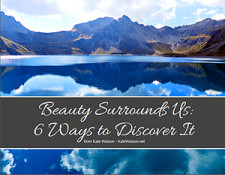
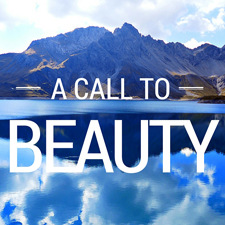
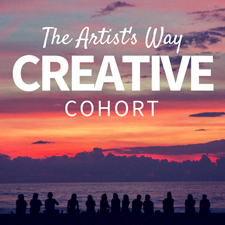







Penny - this makes so much sense Sue Ann. I know when I sit down during the day at the table to eat my lunch, rather than nibbling/grazing/eating whilst doing other chores, I enjoy my food more, and remember what I have eaten. I never eat at my computer though, the thought of food or crumbs on the keyboard actually makes me feel nauseated. X
Laura - Guilty, guilty, GUILTY! I spend a lot of time engrossed in books while eating and I’m sure I barely notice the food going in. In fact, I know that I’ve been surprised when I looked up from the book to realize that the plate was empty. This is a great reminder to be mindful while eating. Great post!
Allison Evans - Ah! I love this! 30-40% of our digestive response comes from our thinking about our food? Wow. That’s all I need to know. I have known intellectually about the importance of savoring my meals, but lately I have found it hard to resist reading during lunch. . . or watching a show during dinner. . . or popping up and down during breakfast to help my family out the door. Now I *really* know. Thank you, Sue Ann.
Michelle - “What would it feel like to set a place at the table?” Hmmm… That’s a great question. This single woman eats on her sofa in front of the TV every night. 😮
But I remember a glorious night in a time gone by when I was immersed in a lovely program called Clueless in the Kitchen. I DID set a place at the table. Many nights. And it was lovely.
Thank you for the gentle reminder to resurrect this practice, Sue Ann!
april - i love the word savor. i love to hear how it sounds, i love to visualize its meaning. thank you for this captivating reminder to slow down and think about our responses. to notice, to delight in, and to savor our food.
Angela - “eat only the foods that I truly love” that really changes everything doesn’t it?
I have to admit I don’t really love food, I eat it because I have to. I love to cook, especially with and for my boys and I love the way they enjoy it but for me it’s a effort. I have tried some of the recipes that Sue Ann shares and I have to say when you really do stop and notice the colours and the textures and the flavours it really does make a difference. I promise to slow down and notice and love the food that I eat. x